
HILL CITY, S.D. (Bart Pfankuch /South Dakota News Watch) – Hill City School District Superintendent Blake Gardner is trying to plan well in advance for major disruptions to student and staff transportation that will result from a $72 million project to rebuild 15 miles of U.S. 385, the only major north-south route through the central Black Hills.
The three-year project will include five separate complete closures of the winding two-lane highway that flows amid scenic lakes, giant rock outcroppings and dramatic ridge lines but which also has a high rate of crashes and fatalities.
Gardner calls U.S. 385, which connects Custer State Park on the south to the gambling destination of Deadwood on the north, the “backbone of Black Hills travel.”
The two-lane highway provides access to Pactola Reservoir and Sheridan Lake. The road is also a pipeline to Mount Rushmore National Memorial and Crazy Horse Memorial and helps fuel a regional tourism industry that brought $2 billion in revenue to South Dakota in 2021.
Gardner is just one of thousands of people who live, work or vacation in the central Black Hills. He’s coming to grips with the delays, detours and general disruption that will be caused by construction on the road that’s critical to commerce, emergency services and daily life for residents.
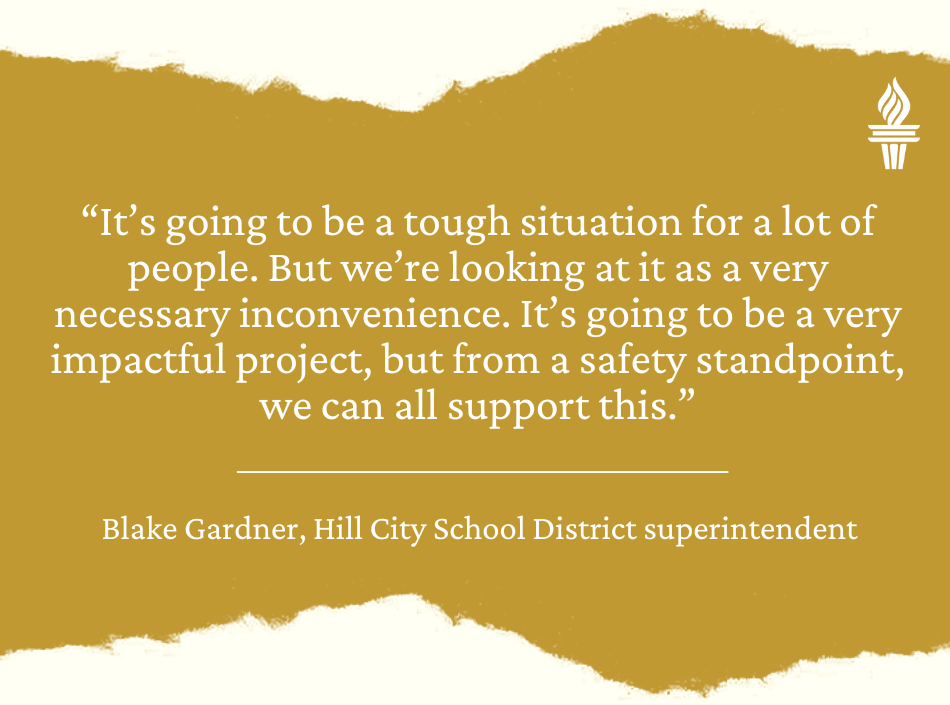
“It’s going to be a tough situation for a lot of people,” Gardner said. “But we’re looking at it as a very necessary inconvenience.”
For Gardner and his team, plans now include shifting the entire annual school schedule for one year or possibly two to reduce the effects of road closures that will add an hour of daily school bus travel time for about 30 students and a handful of school employees.
“It’s going to be a very impactful project,” he said, “but from a safety standpoint, we can all support this.”
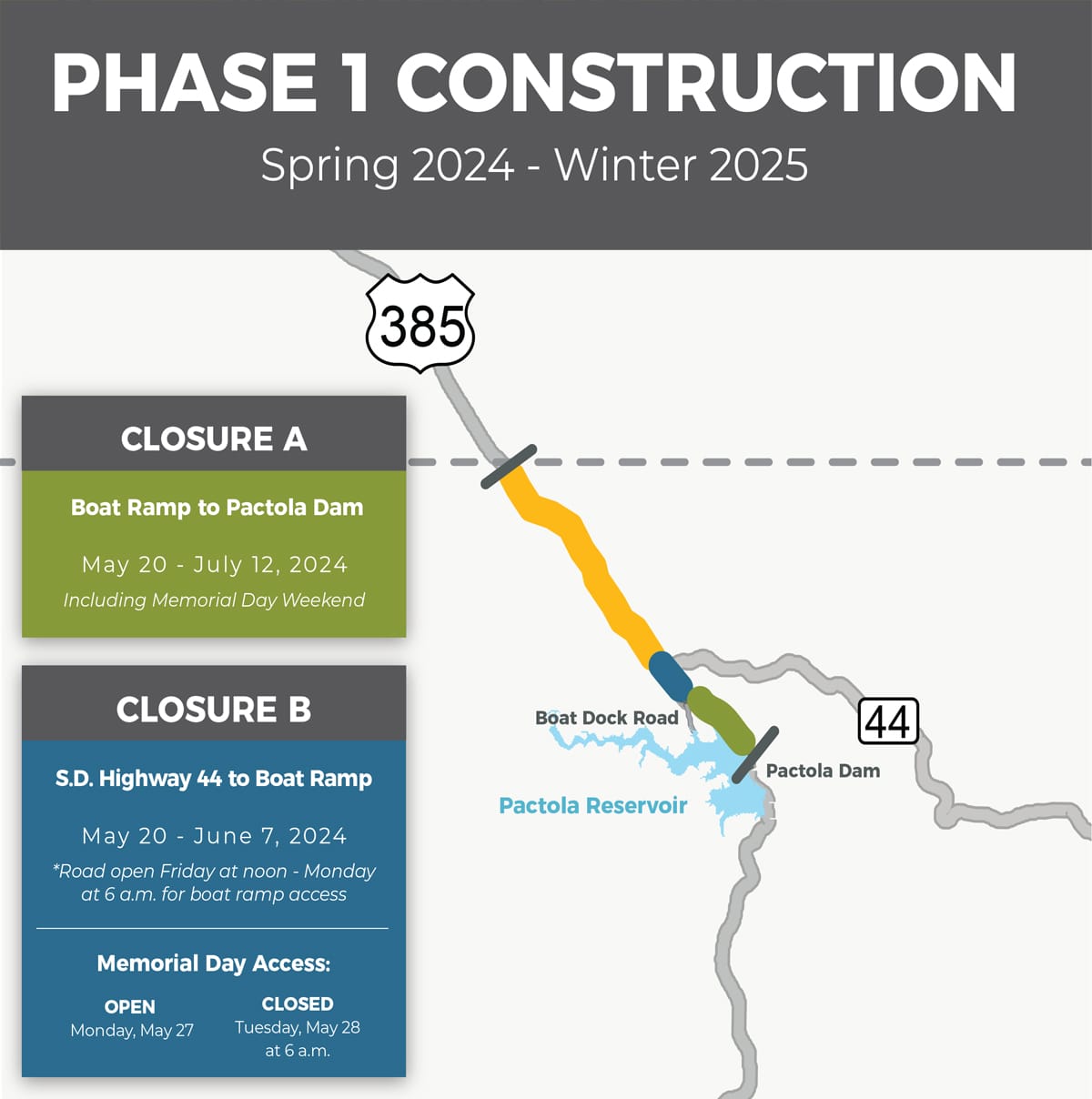
Five separate closures planned
U.S. 385 will be closed entirely at five points over two separate time frames during the construction that will be done from spring 2024 to winter 2026 from the Pennington-Lawrence county line on the north roughly to Sheridan Lake on the south. The closures will require detours that will include a roughly 40-mile trek through Rapid City.
The construction project will include widening road shoulders, smoothing out sharp curves and adding turn lanes to make the road safer for travel.
To do so, the state Department of Transportation will need to clear trees, blast rock, enact lane closures with use of pilot cars and close the highway completely at five separate locations for up to months at a time. Traffic on U.S. 385 has already been affected due to tree-clearing that began in November and is the first step in the project that will also include resurfacing.
Highway closures near Pactola will take place roughly from May to July 2024 and again from October 2025 to April 2026. During those times, access to the Pactola boat docks and marina will limited. Closures near Sheridan Lake will occur from April to June 2025 and from August to October 2025. Some holiday, weekend and Sturgis rally road openings will take place.
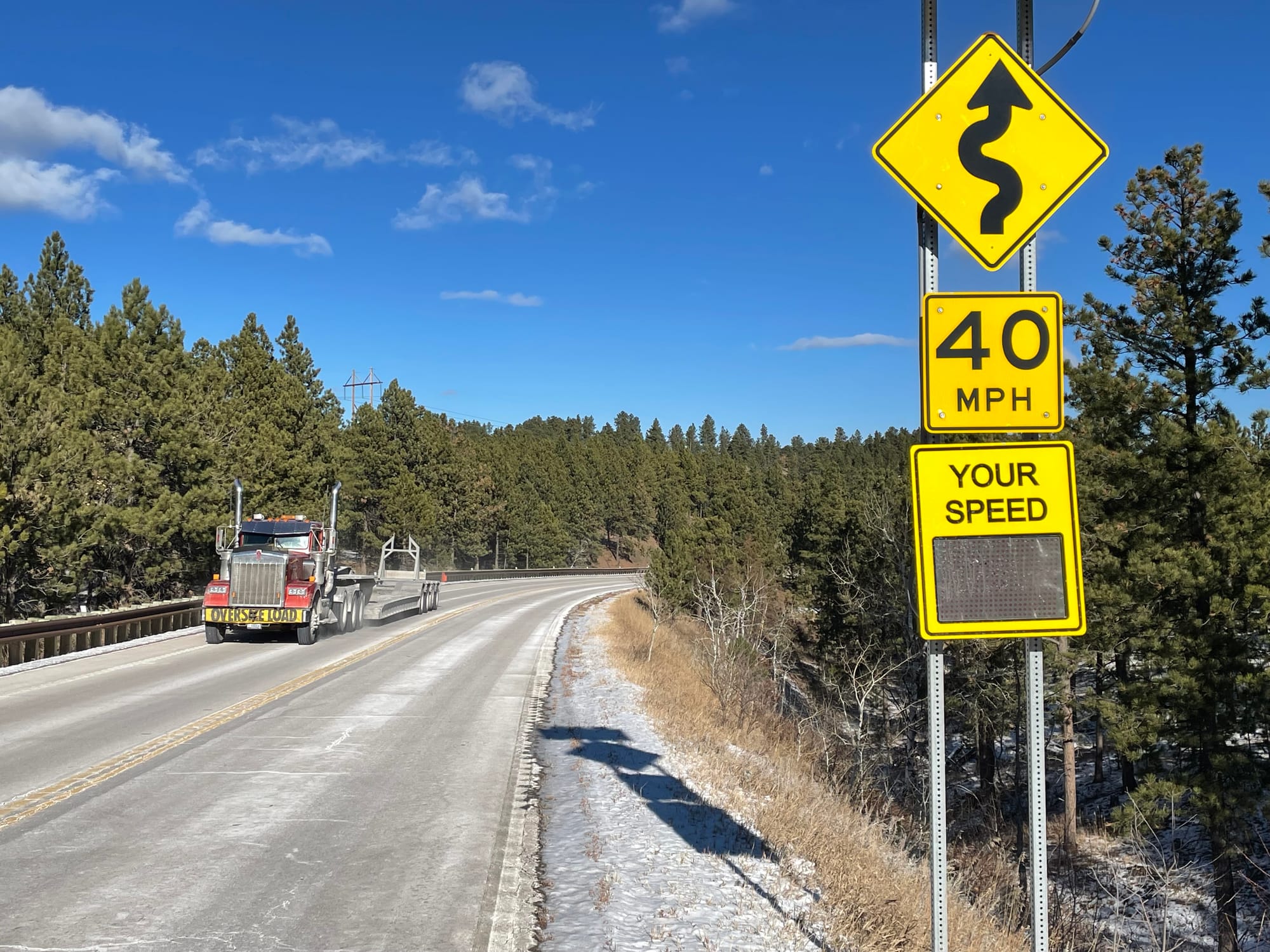
Run-off crashes common on roadway
The overall crash rate on the 15-mile stretch of highway being rebuilt is more than double the state average, according to DOT data.
In the five-year period from 2018-2022, 187 crashes were reported, with four fatalities and 57 injuries. A third of those wrecks and most of the deaths occurred when motorists left the roadway, which in spots has almost no shoulder space while closely abutting rock walls or rimming atop significant drop-offs.
The DOT’s goal is to cut the crash rate on the segment of highway by 50%, largely by eliminating tight curves, expanding sight lines for motorists or expanding shoulders from 2 to 8 feet, which has a proven success rate in reducing run-off wrecks.
“The safety enhancements designed into the Highway 385 reconstruction projects are significant,” Rich Zacher, Custer area engineer for the DOT, wrote to News Watch in an email. “Safety is at the forefront of this project for local residents, area commuters and tourists.”

Project communications criticized
A pair of business owners interviewed by News Watch expressed concerns that the DOT has not done enough to mitigate the potential effects of the project on the tourism industry and has not adequately informed the public or business owners about the planned disruptions.
Wes Shelton of Rapid City is president of the Educational Travel Institute of America, a group that helps arrange travel opportunities in the Black Hills, and also a board member at the Crazy Horse Memorial Foundation. He said he continues to run into people and business owners in western South Dakota and beyond who are unaware of the project, especially about the planned closures of U.S. 385.
“It’s going to hit a lot of people unexpectedly,” he said.
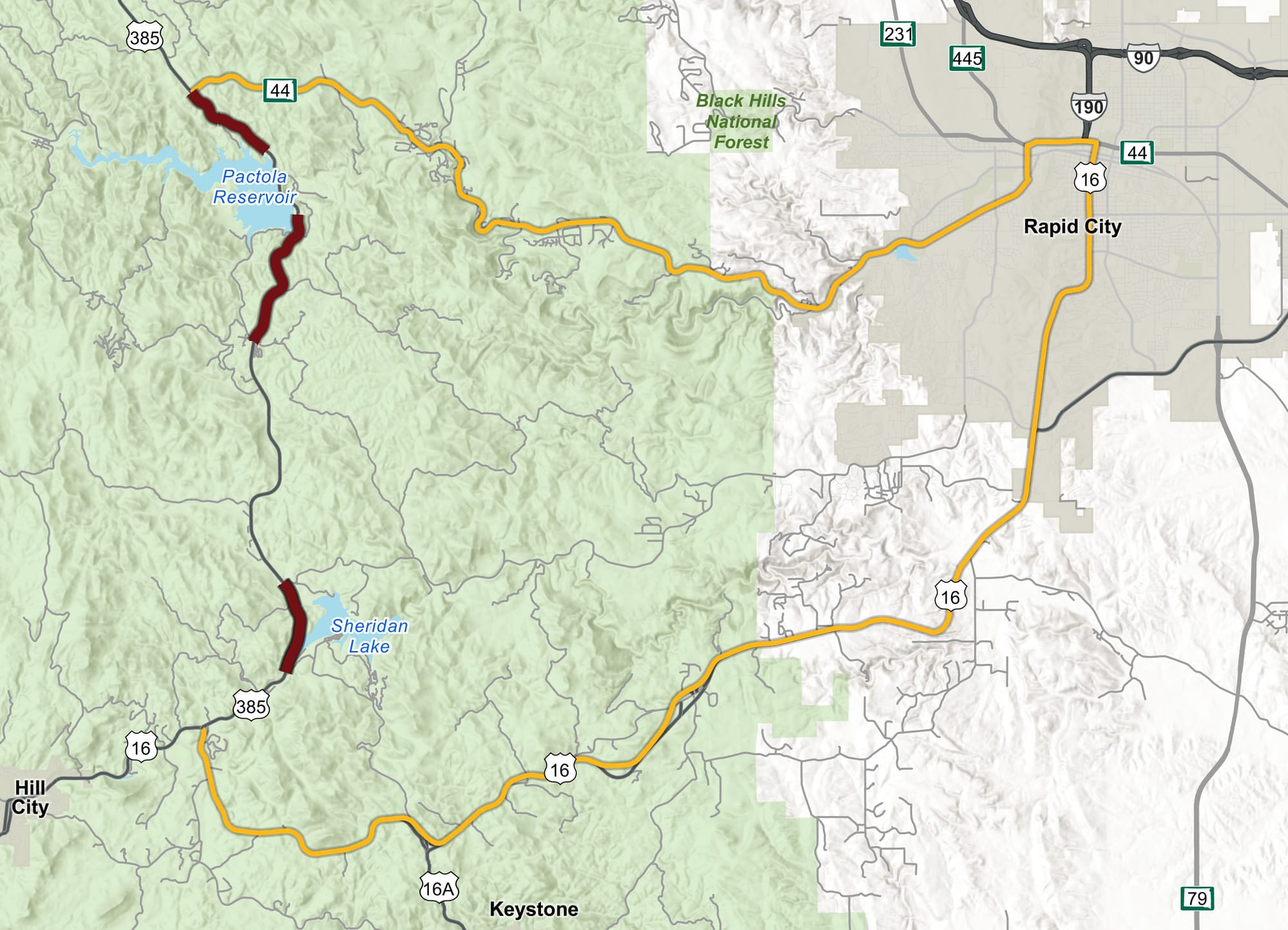
Shelton, who has deep ties in the tourism industry, said the state has not done enough to inform business operators outside the state that the road will be closed or reduced to a single lane of traffic. That lack of knowledge could impact the timing and possibly the safety of tour groups that rely on closely planned time schedules to make the trips effective.
In general, Shelton said he isn’t convinced the state has done enough to prepare for potential emergencies or has made enough efforts to reduce the potential effects of the project on locals and visitors.
“Things have been told and things have been promised, but I’m not sure they (have) done enough to mitigate the impacts,” he said. “I don’t know if there’s intentional efforts to mislead, but it’s been sloppily done and it concerns me that the way the meetings have been done, that most people don’t know anything about it.”
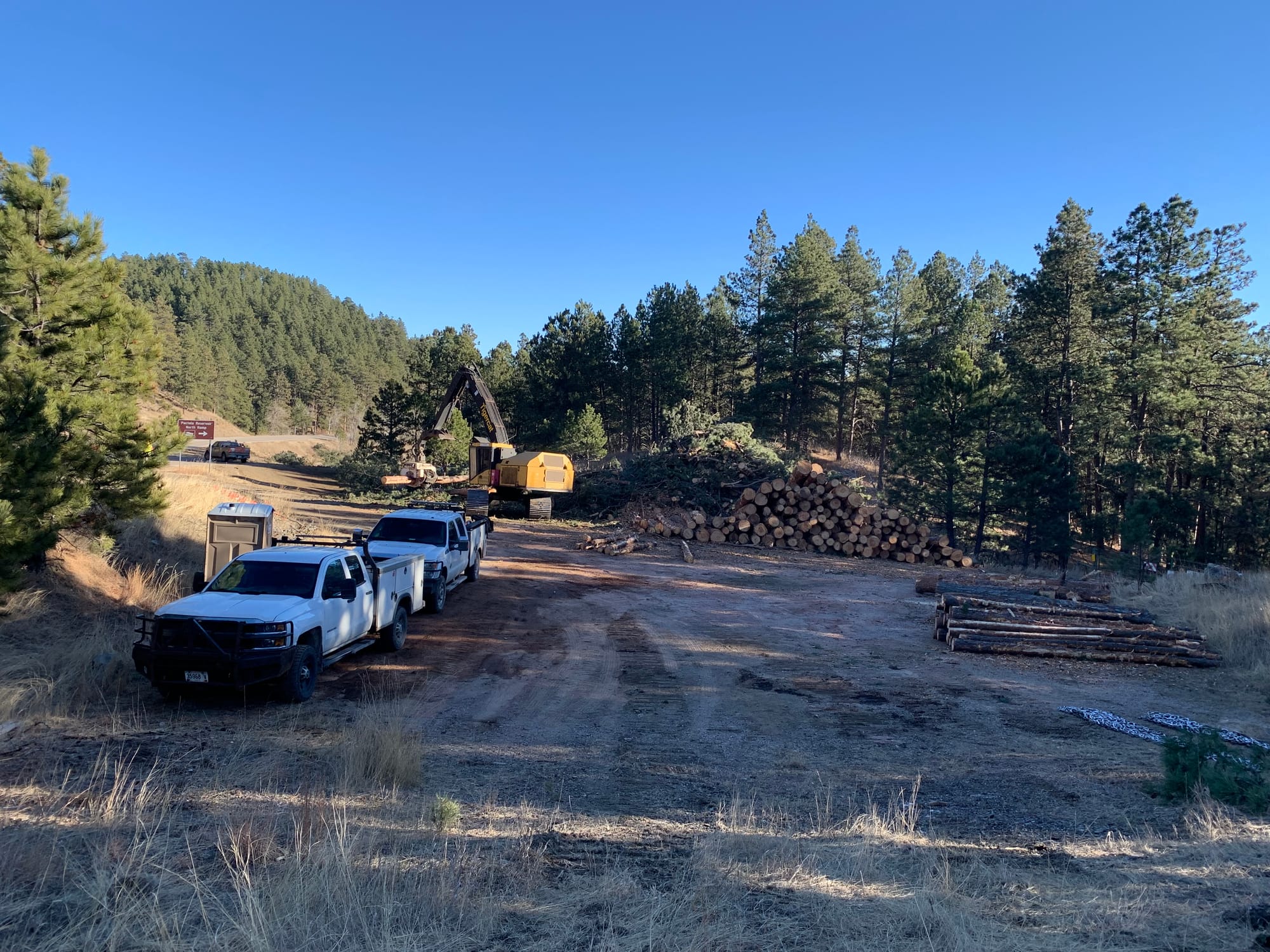
‘Make their lives miserable’
Nancy Evangelisto operates the Summer Creek Inn, an upscale lodging, dining and event business that survives largely on summer visitors who seek a peaceful getaway at a woodsy site just off U.S. 385 midway between Sheridan Lake and Pactola Reservoir.
“I’m a little distressed about it,” she said. “It’s going to have a significant impact on our business.”
Evangelisto said she feels the needs of business owners have not been taken enough into account by DOT, for example, in regard to the rock dynamiting process that she was told will occur both during the day and at night.
Evangelisto also wonders if better options could’t have been found for the timing of the road closures and the location of detours that could have been shorter in length and time.

“I understand the need for it, but a lot of the businesses are concerned about the total shutdown of the highway during the height of the season,” she said, adding with a slight chuckle, “It’s like they said, ‘Let’s just make their lives miserable all the way around.'”
DOT makes outreach efforts
DOT spokeswoman Julie Stevenson denied a request from News Watch to interview an expert on the project. But she said in an email that the department has taken great steps to inform the public and affected stakeholders about the project and its possible impacts.
The state has built a website devoted to the project and has more than 620 people receiving correspondence with project updates, Stevenson said. The state held a workshop for emergency service operators to educate them about the project and to share ideas to ensure fire, medical and law enforcement operations are impacted as little as possible.
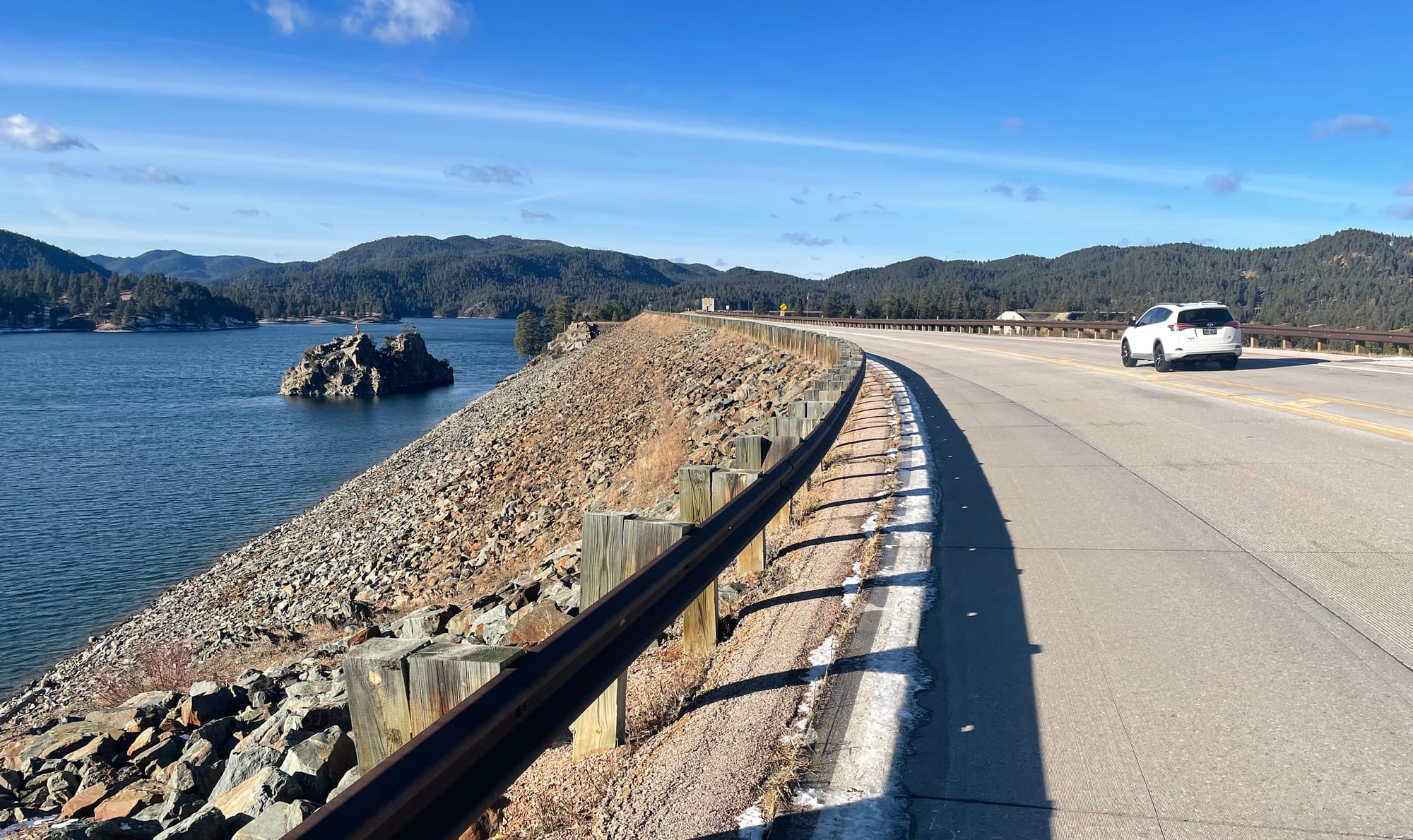
The agency held several workshops and presentations with tourism groups across the Black Hills, including at the annual meeting of the Black Hills & Badlands Tourism Association, which has 488 member businesses.
Michelle Thompson, CEO of the association, said she feels the DOT has done a good job of publishing public information about the project and listening to – and adapting to – the concerns of those affected.
She said the vast majority of tourism operators understand the need for the project and will find their own ways to keep tourists and their dollars flowing. Thompson has shared details on the construction with contacts at national trade shows and potential tourists who contact the association to let them know that disruptions in travel are likely but should not be seen as a deal-breaker.
“We certainly don’t want to discourage people from coming here just because there will be road construction going on,” she said. “While it will be painful the next couple years, we’ll just make the best of it and do what we can to keep things moving.”
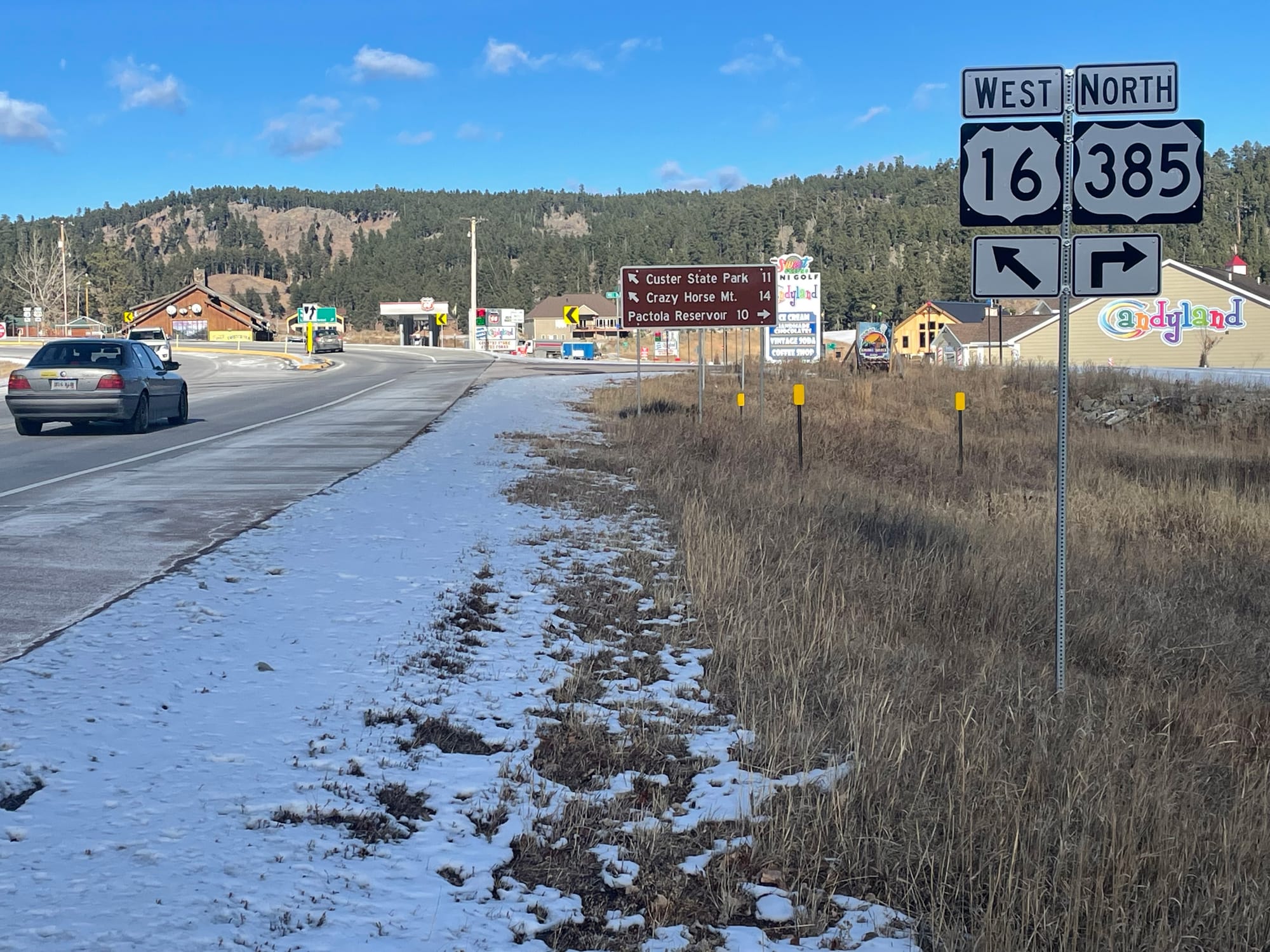
Dory Hanson, executive director of the Deadwood Chamber of Commerce and Visitors Bureau, said she has attended three meetings about the U.S. 385 project and is working to inform the chamber’s 450 members and potential visitors about the travel disruptions.
“One of the things we’re doing right now is just getting the word out,” she said, especially about a detour process that will require tourists from the south to reroute through Rapid City and Sturgis in order to make it to Deadwood. “Right now, we’re optimistic that our travelers are still going to find us.”
The Pennington County Sheriff’s Office, which is responsible for law enforcement in the construction area as well as for rescues at Pactola and Sheridan lakes, is well prepared to respond to emergencies during the construction, Sheriff Brian Mueller said.
“We have been involved and monitoring this project from the start,” Mueller wrote to News Watch in an email. “We have been sending staff to the community and stakeholder feedback meetings and have been routinely providing our own feedback. They have been working with us to keep an emergency access open to the lakes for emergency response.”
